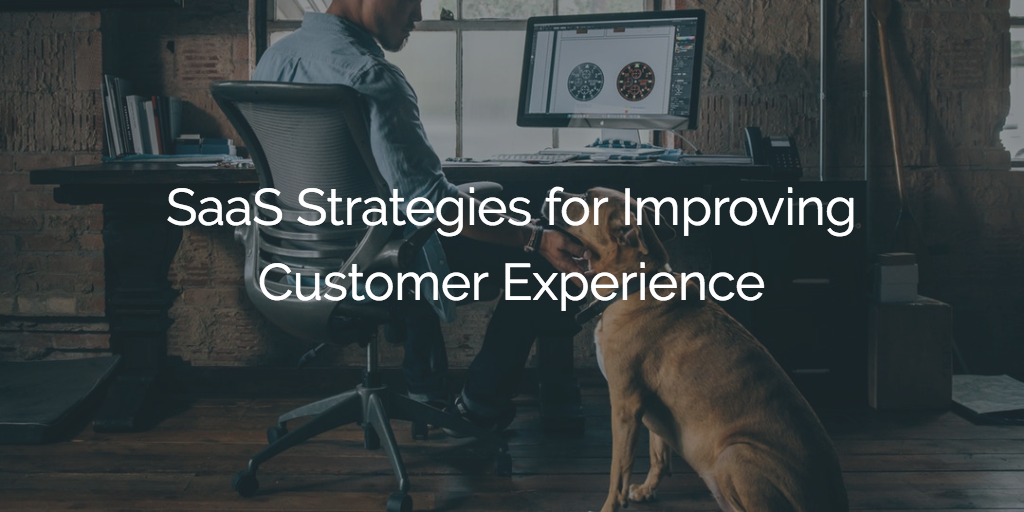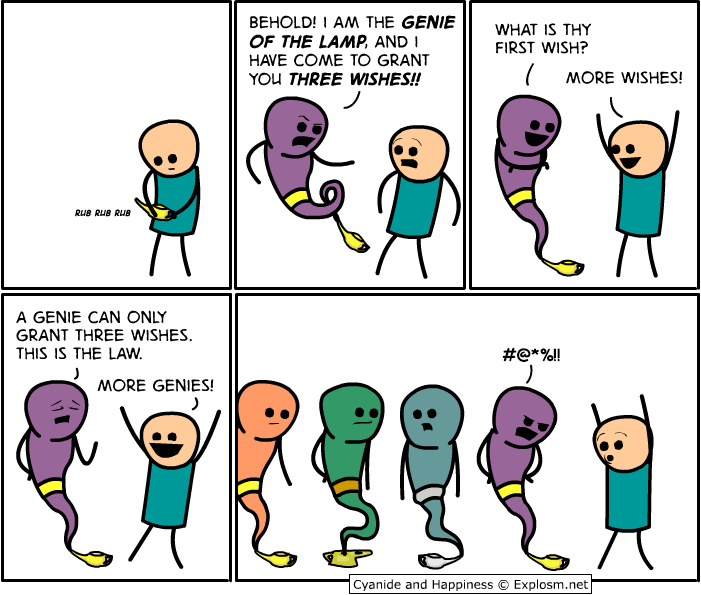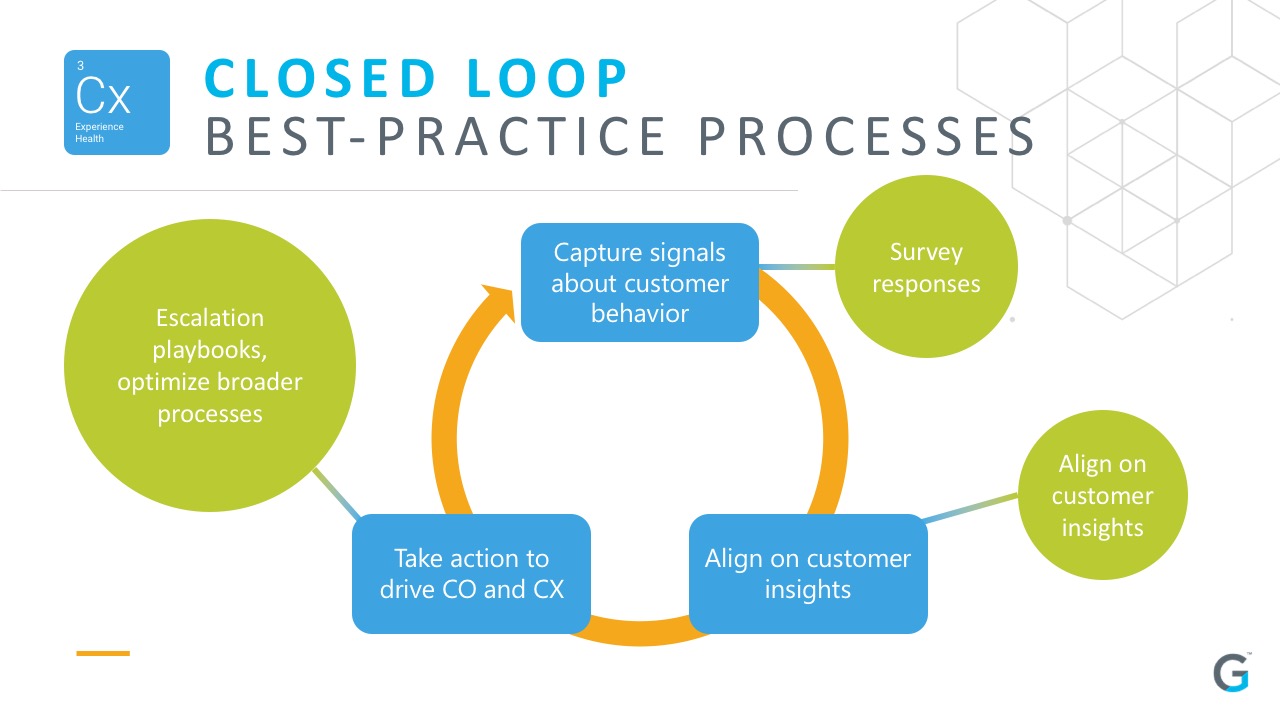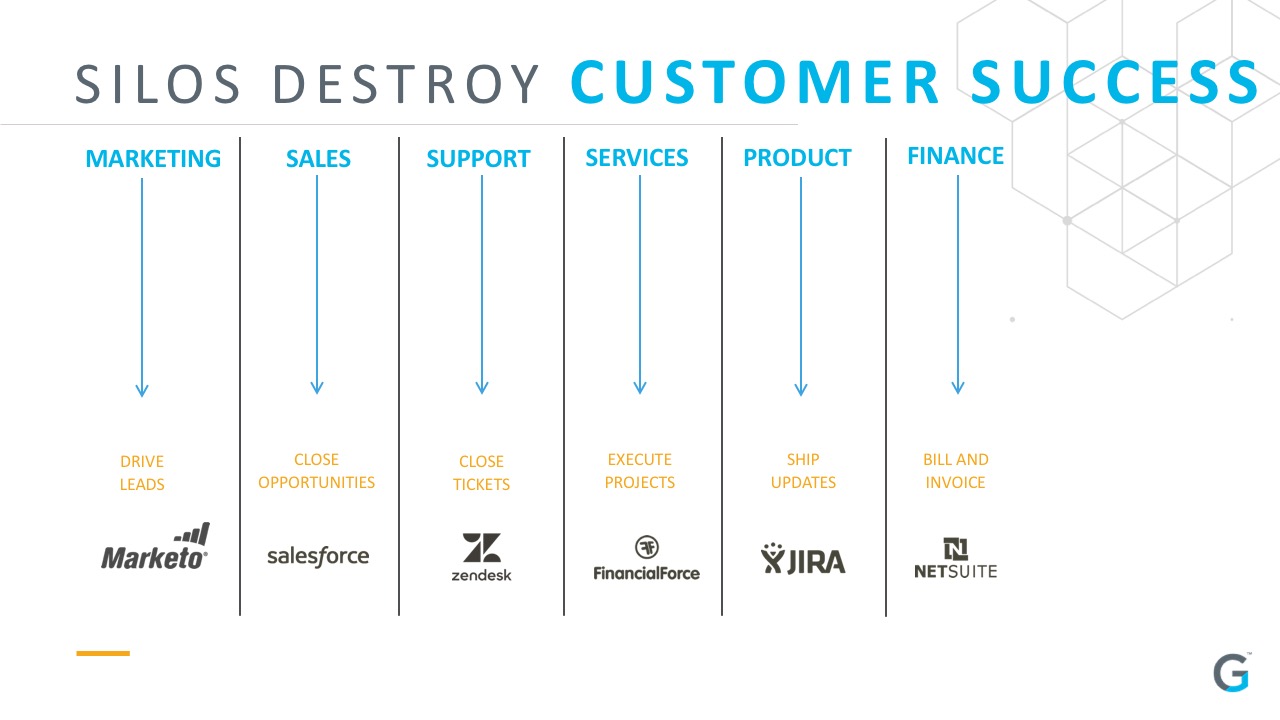
If I found Alladin’s magic lamp, the first thing I’d wish for (after an infinite number of extra wishes, of course) would be an extra “untimed” month between the end of the year and the beginning of the next so we could have some focused time to plan as a company.
Sadly, there’s no such thing as wish-granting genies. And unless we develop the technology to hold our year-end budgeting meetings in orbit around a neutron star, we’ll have to keep doing what we’re doing—planning for next year while simultaneously wrapping up the current one.
Why Customer Experience Needs to Be a Priority
Most SaaS companies today know they need to take Customer Experience (CX) to the next level next year. I’m sure you’ve read the reports on how Customer Success and Customer Experience are key to growth in the Subscription Economy. And you’ve probably made some progress. Maybe you hired a Customer Success (CS) leader. And maybe you hired some Customer Success Managers (CSMs). You may have even checked out a conference or book on the topic.
But as we move into the new year, it’s time to get serious and make CX a differentiator for your business. That means you’re probably wrestling with questions like:
- People: Who owns the various parts of CX/CS next year? In particular, who owns revenue from CX/CS (e.g., renewals and expansion) next year? Do I need a new leader in CX/CS and, if so, what should I look for?
- Process: What Key Performance Indicators (KPIs) should I think about measuring next year? What new processes should I implement?
- Technology: What technologies should I consider to accelerate our progress?
Let’s answer these questions and a few others methodically.
People
In the early days of CX and CS, most companies’ first attempts were exclusively through hiring people. They brought on mid-level team leaders or retasked existing employees to spin up self-contained organizations to “do” CX or CS. Maybe this was alright as a start, but there were two unintended consequences to the approach:
- It created yet another siloed team.
- It tasked the CSM team with a job that had almost infinite scope.
As our knowledge base has grown more established and sophisticated, however, I’ve seen more and more companies adopt two concepts I first started describing at our Pulse 2018 conference, when thinking about people and Customer Success:
- CS > CSM: Certainly, Customer Success needs a CSM team. But it’s got to be bigger than just CSM alone.
- CS = CO + CX: Customer Success is the combination of nurturing clients to achieve their desired outcomes while having great experiences, and the experience part requires everyone in the company to be involved.
Bringing Customer Focus to Each Department
With those principles in mind, it’s time to consider the following ownership changes at your compnay (if you haven’t already):
- Customer Experience: Appoint a czar to project manage CX across the company. Often the Chief Customer Officer or head of Customer Success is best suited for this. In some cases, the Chief Marketing Officer, Chief Operating Officer, or Chief Product Officer are also appropriate stewards. Typically, the tactical step is to create a Customer Experience Council involving Marketing, Sales, Product, Services, Support, CSM, and other functions. We did some research on who this person might be in this post.
- Marketing: If your existing subscription business is substantial, Marketing needs to go beyond lead generation and customer acquisition. Give them accountability—for expansion leads, for adoption marketing, for customer advocacy, or for some combination thereof. In addition, ensure Product Marketing is spending time with the Customer Success team to enable them—not just with Sales.
- Sales: As we’ll discuss below, it’s time to define how much you want your Sales leader involved with your existing customers. Be clear on whether you want a pure “hunting” organization or full revenue management. (More on this later!)
- Finance: Make sure the Finance team is treating the Customer Success team as a partner in terms of forecasting, metrics, and the like.
- People: Customer Success often ends up being a person-intensive business. As such, your Human Resources team needs to plan for adequate time around hiring, career pathing, development, and retention.
Who Owns Recurring Revenue?
One of the biggest “people” decisions to make for next year is who owns recurring revenue. By that statement, I mean which organization is accountable for renewals and which is accountable for expansion sales (upsell/cross-sell).
For some context, many organizations built Customer Success as a peer organization to Sales without changing anything about the Sales role. Hence today, you have:
- Customer Success people charged with minimizing churn and maximizing retention as well as with identifying upsell/cross-sell opportunities.
- Sales people being paid (like they were before) on new business, renewals, and expansion.
So when a customer doesn’t renew, who’s accountable? When a client doesn’t expand, who takes ownership?
If you’re like me, you really value knowing who is responsible for what in the company.

Three Models for Revenue Ownership
Conceptually, I’ll lay out a few models that I’ve seen:
- Classic: The Sales Rep owns all things revenue—new business, renewals, expansion. The CSM is all about adoption and value as a partner to Sales.
- Hunter/Farmer/CSM: The “Hunter” (Sales Rep) closes new logos (with perhaps a short period afterward to upsell). The “Farmer” (Account Manager) manages the commercial relationship after the sale (renewals and expansion). The CSM drives adoption and value as a partner to the Account Manager.
- Hunter/CSM: The “Hunter” Sales Rep closes new logos. The CSM owns adoption, value, AND renewals. The CSM may do some small expansions and bring in the Sales Rep for bigger expansion.
In my experience, the Hunter/Farmer/CSM model is probably the most popular across the SaaS/Cloud industry. And one of the emerging trends inside this framework is to put Farmers and CSMs together underneath a Chief Customer Officer or Head of Customer Success, freeing the Sales leader to focus 100% on ARR growth.
But as you move from models one and two towards model three, there’s one major unresolved question—whether or not CSMs “own” renewals. This is a very hot topic in the industry, and I don’t think there’s a one-size-fits-all answer. But instead of just saying “it depends,” here’s a framework to help you figure out which size fits you.
Pros and Cons of CSMs “Owning” Renewals
Pros of CSMs owning renewals:
- Renewals are often the second priority for the Sales team and the rep, hence the experience for the customer isn’t always great and the efficiency/effectiveness is sub-optimal.
- CSMs usually have tighter client relationships (given the frequency of their interactions), so they can surface better insights from the client to drive the renewal.
- With fewer “cooks in the kitchen” and fewer hand-offs, the CX is also better.
- It most likely costs less overall.
Cons of CSMs owning renewals:
- Some CSMs benefit from the client knowing they have no quota or revenue incentive, allowing them to be considered “trusted advisors.” Note: Many CSMs with renewal quotas are still viewed as trusted advisors by their clients.
- Renewals do involve negotiation (especially with procurement), and Sales teams typically have much more experience in this.
- CSM teams often report being stretched too thin, and renewals can sometimes become the “straw that broke the camel’s back.”
Broadly speaking, I am seeing more and more companies move to a model where CSMs own renewals, though it’s not for everyone.
Which Model Is Best for You?
Stepping back, I see the fit for the three models as follows:
- Classic: Appropriate for very high touch / large contract businesses where (1) there is lots to up-sell after the first deal, (2) renewals are complex in terms of contracts and (3) the core product is generally “sticky” (95%+ gross retention). Some of these companies over time move the renewal operations function to a renewals specialist. Salesforce.com and Workday, to this day, is still in this model.
- Hunter/Farmer/CSM: Common for businesses that are high touch enough to need a CSM focused on adoption/value (versus revenue) but where the product itself isn’t as sticky (hence the need for a true salesperson on renewals).
- Hunter/CSM: Frequently an evolution from model 2. If some parts of the CSM job have been handed to other specialist functions (e.g., Onboarding team, Services team, Training team, Support team), CSMs taking on Renewals can improve efficiency. Separately, low touch / small contract businesses often start with Model 3, with CSMs becoming the up-leveling of the traditional Account Manager.
Process
Let’s talk process. If you’re like most SaaS companies, you already have:
- A basic customer lifecycle/journey
- A simple framework for thinking about the health of your clients
- A process for driving adoption for clients
- A cadence of surveying clients

One of the trends I’m seeing more and more as I talk to leaders in technology-as-a-service is differentiation through Customer Success. Turning your customers’ outcomes and experiences into a quantifiable competitive advantage takes more than just great people. It takes scalable processes. That means going beyond the standard CSM playbook to set your org apart from the ever-expanding field of competitors. Out of the thousands of SaaS companies I’ve met, I’ve seen the following priorities in terms of processes for the next generation of Customer Success:
- Outcomes Health: Develop a more complete and predictive view of measuring how your clients are achieving their desired outcomes with as robust of a process as possible.
- Experience Health: Incorporate measures of customer experience (e.g., Net Promoter Score surveys) into the definition of health.
- Renewal Management: Renewal processes are often an afterthought for Sales in the early days of a company. As such, maturing businesses must (1) standardize and streamline workflow for renewals, (2) automate renewals for the low end, and (3) give great visibility and predictability to renewal forecasts.
- Expansion Management: Create data-driven processes to manage interaction between CSM and Sales to drive upsell and cross-sell.
- Advocate Engagement: Marketing teams should streamline their processes to track existing advocates and references and mobilize/capture more.
- Stakeholder Alignment: Enterprise-oriented businesses are often looking to up-level their alignment with clients. This means standardizing outreach to key executive contacts at clients and making Executive Business Reviews (EBRs) truly executive-level.
- Risk Escalation: Some companies feel constantly surprised by risk and unclear about the action plans to get clients back to health. It’s time to change that!
- Success Planning: While the early days of CX and CS were all about measuring signals like adoption and satisfaction, the future is about making sure clients get to their desired outcomes. As such, implement a process to capture a client’s goals in the sales process and make sure they are shepherded through the entire client lifecycle—from onboarding to CSM to EBR to renewal to expansion.
- Tech Touch: Many SaaS vendors are struggling with scaling Customer Success to their smaller clients. Solution: use marketing techniques (email, in-app, etc.) to automate Customer Success.
- Product Success: Since Customer Experience is about the entire experience, the product is a critical part of CX. Product leaders must align more tightly to CS/CX and use data and CS learnings to improve product development. This includes refining enhancement request and tracking processes, overhauling UX research, and rethinking advisory boards.
- Services Experience: In the new world of customer power, Professional Services (PS) is no longer just about bookings and margin. Companies need to move PS from a focus on hours to a drive toward outcomes. This involves rethinking PS workflows and measurement.
- Support Experience: Support was traditionally all about efficiency—how quickly you can resolve the case, get off the phone, etc. But support cases often need to be resolved in the bigger picture of the client’s desired outcome and health. In addition, support experiences end up being important “signals” in terms of customer health.
- Channel Success: Companies with resellers, distributors, and other indirect channels are often looking to extend CS and CX to their partners.
Technology
As you look through those processes and start thinking tactically, “How do I accomplish all these processes?” Obviously it’s going to take the right set of tools. In service of the above initiatives, innovative companies are often looking to modernize their systems and technology stack. But if you’re reading this and you’re in IT, you’re already shaking your head—from a data perspective, it’s a potential change management nightmare. Considering most SaaS businesses already have customer data coexisting separately in (at minimum):
- A Sales system to manage sales opportunities
- A Support system to manage support interactions and cases
- A Marketing automation system to email and nurture sales leads
In essence, your tech stack (and org chart) might look something like this, for example:
But in order to to take the next step towards CX/CS differentiation, you need to take some serious steps toward complementing that stack by:
- Implementing or expanding your CSM system—particularly to include more functions in the Customer Experience workflow like Renewals, Account Management, Sales, Services, Support and Product.
- Investigating in-product technology to measure product usage and drive adoption through walkthroughs.
- Nurturing and mobilizing customer references through advocacy technology.
- Orchestrating all your systems (and customer data) together in a single view.
That may seem like a recipe for even more data fragmentation, but it’s possible (and probably easier than you might think) to seamlessly (at least to an end user) orchestrate these even in the midst of disruptive processes like in the case of a merger or acquisition.
Conclusion
If there’s one mistake I see SaaS companies make in their budgeting process, it’s that it’s more of a corrective exercise than a proactive one. We know where our budget fell short this past year, so we fix our shortfalls next year. And then we repeat next year, and the year after, and the year after. Like I said at the beginning, if we had some sort of time paradox, we wouldn’t have to settle for this process.
Our CCO, CFO, and CIO recently got together to record and broadcast a webinar where they got really strategic about how they’re thinking proactively about CX and CS budgeting. They answered a ton of questions. As you start planning for your future success, I highly encourage you to listen to their incredibly insightful discussion. Click here to watch the recording.



